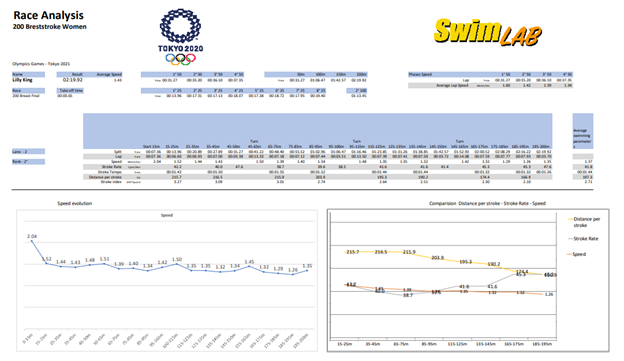Mental Health, Swimming
Welcome and thanks for visiting...

The Age of Sports Analytics Is Now

The sports analyst has become an important contributor to the group experts which comprise an elite athlete’s coaching staff.
Using special software and formula to produce advice of value to the athlete and other coaches, we analysts spend large blocks of time studying computerized information of the athlete’s action movements assembling valuable dynamic coaching data.
Understanding what and how to analyze important aspects of the action that is important to the team is crucial.
In swimming, where I work frequently, analysis doesn’t just measure the back and forth of the in-pool efforts. There’s much to analyze and in our world data is king.
As the cliché goes, analysis without data is just an opinion and everybody has one. Welcomed opinions are evidence bases.
Valued analytics embraces quality and quantity parameters.
Analyzing the quality of the athletic movement by the precise study of the use of the limbs, muscles, and joints. Analyzing the quantity, for instance in swimming, would emphasize the stroke rate, tempo, distance per stroke, and speed.
The combination of the two produces the best information and the analyst must be well versed in the sport-specific body movement.
To be swimming specific:
- The common analysis in swimming is a kinematic analysis, studying the effect of the movement in the athlete's body. The main parameters are connected to the movement, stroke rate or stroke tempo, distance per stroke, and speed.
- The stroke rate is the frequency of the arms action measured with the number of cycles per minute. The stroke tempo is the same parameter but from a different point of view-- the time of one cycle. The distance per stroke measures the distance traveled by the body in one cycle.
Consistent analysis methods are important to check the evolution of the athlete. Sometimes, however, it is important to change the point of view, to see the same action with a different set of parameters.
As an example, for breaststroke, coordination is essential. It is the basis of the kinematic improvement. To produce breaststroke coordination data—not just an opinion—I time every phase of the pull, the breath, and the kick allowing a full spectrum look. When synchronized seeing the coordination allows me to track the swimmer’s progress.
This gives us the ability to chart different duration and individual phases as in the report analyzing a 200-meter race, we can look at the data in 50-meter chunks revealing how the performance evolved, charting the differences during each phase.

There is a lot of data and it is not always simple to understand, so to assist the athlete and team we create visualization tools like this showing the data in more understandable ways.
Sports performance analytics is a wide category. The needs of coaches and athletes are equally broad. The key to success is blending a skilled analyst with a compatible point of view and sharp communication abilities.





